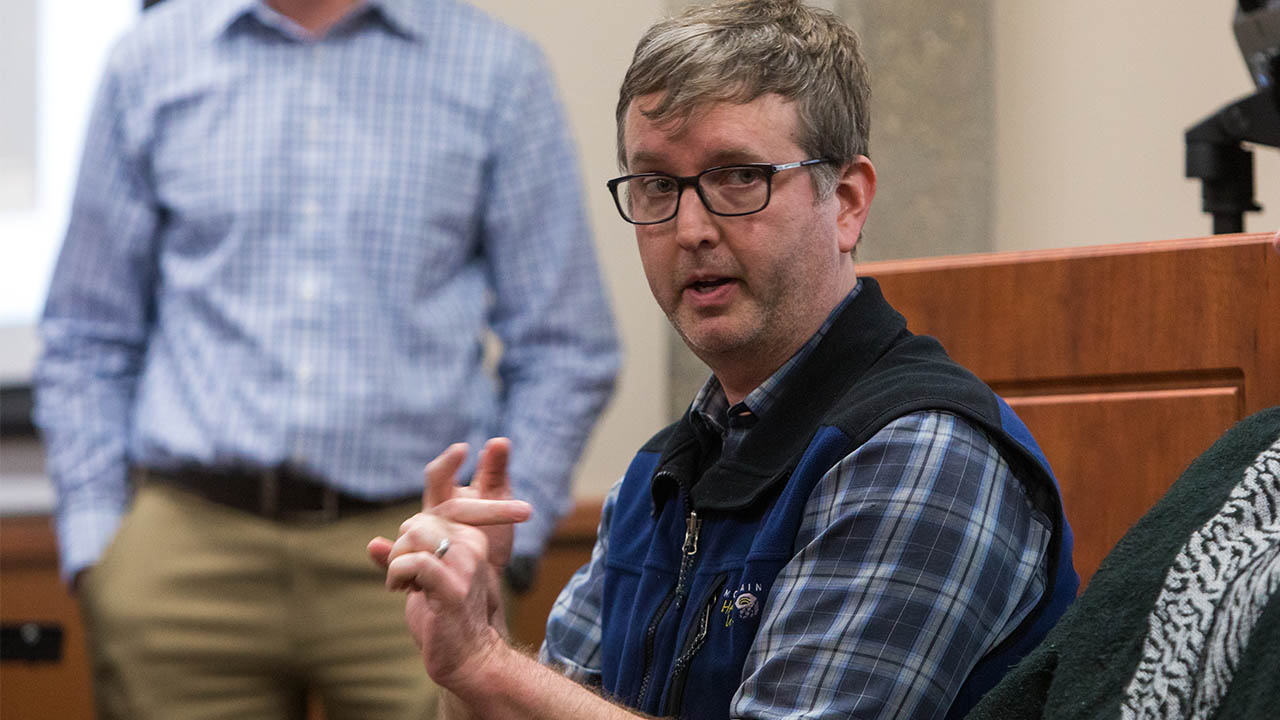
Dr. Chris Underwood, department chair and associate professor of environmental science and society at the University of Wisconsin-Platteville, is working on a project, funded by the National Park Service, to expand fire history research in Great Smoky Mountains National Park. At the conclusion of the project, the researchers will have a spatially comprehensive fire and vegetation history of the entire park that dates back to the last major North American glaciation.
This phase of the project expands research Underwood began as part of his dissertation work more than a decade ago, when he and a team of researchers created a record of fires for the western portion of the national park. This section of the park is considered more fire-adapted, where regular fires play an important role in promoting a healthy ecosystem. The recent funding will allow them to extend the research to the eastern portion of the park – an area that is typically wetter and not as adapted to fire.
“Oftentimes, especially in the U.S., when we think of wildfires, we think of the big fires that burn out West,” said Underwood. “But, there are ecologically adapted forests in the East as well. There are pines there, for instance, that actually need fire to be able to reproduce effectively. We struggle, collectively, as a nation and as a people with our relationship with fire. When I grew up, I was taught fire is bad, and you need to put all fires out. This is what has gotten us to this point today, where we get these infernos that burn out of hand, because we have multiple decades of fuels that have been building up on the landscape. We need to do a better job managing these forests so that doesn’t happen and so that fire becomes more of a natural disturbance in these ecosystems again.”
To construct a fire history, researchers can use two natural archives, one being to analyze fire scars on existing trees. This is limited, however, to the lifespan of living trees and can only provide fire records dating back several hundred years. A second method – and the focus of Underwood’s research – is to examine the fragments of charcoal produced during fires, which can be preserved in the soil for thousands of years. These pieces of charcoal preserve a detailed anatomy of the trees from which they came.
Underwood is examining soil core samples from the national park to find charcoal fragments – some microscopic in size – which he then cuts in half with a razorblade to examine the rings and identify the species. After this, the charcoal is sent to a lab for radiocarbon dating to determine its age.
The results of the research, Underwood said, will help inform future land management plans.
“The results that we produce from this research are delivered to land managers,” said Underwood. “When they set their land management plans, which includes fire management as a tool, without these types of data, they are only basing their management plans on limited information, such as from journal entries – one hundred years, or so, of written or spoken history about how fire has burned on this landscape. The data we can provide gives millennia worth of data for managers to hopefully build a more comprehensive fire plan. It’s just like human history in that regard – the more you know about the past, the better prepared you are for figuring out what is happening now and what might happen in the future.”